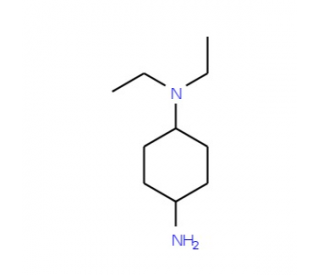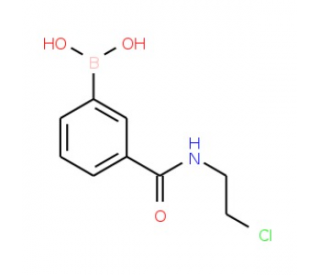详细说明
Species Reactivity
Human
Specificity
Detects human DDR2 in direct ELISAs.
Source
Monoclonal Mouse IgG 2B Clone # 290804
Purification
Protein A or G purified from hybridoma culture supernatant
Immunogen
Mouse myeloma cell line NS0-derived recombinant human DDR2
Gln24-Arg399
Accession # Q16832Formulation
Lyophilized from a 0.2 μm filtered solution in PBS and NaCl with Trehalose. *Small pack size (SP) is supplied as a 0.2 µm filtered solution in PBS.
Label
Unconjugated
Applications
Recommended
ConcentrationSample
Flow Cytometry
2.5 µg/10 6 cells
See below
Immunohistochemistry
8-25 µg/mL
See below
CyTOF-ready
Ready to be labeled using established conjugation methods. No BSA or other carrier proteins that could interfere with conjugation.
Please Note: Optimal dilutions should be determined by each laboratory for each application. are available in the Technical Information section on our website.
Data Examples
Flow Cytometry | Detection of Human DDR2 in HEK293 Human Cell Line HEK293 human embryonic kidney cell line transfected with human DDR2 and Enhanced Green Fluorescent Protein (eGFP) was stained with either (A) Mouse IgG2B Isotype Control (Catalog # ) or (B) Mouse Anti-Human DDR2 Monoclonal Antibody (Catalog # MAB25381) followed by Allophycocyanin-conjugated Anti-Mouse IgG Secondary Antibody (Catalog # ). |
Immunohistochemistry | DDR2 in Human Lung Cancer Tissue. DDR2 was detected in immersion fixed paraffin-embedded sections of human lung cancer tissue using Mouse Anti-Human DDR2 Monoclonal Antibody (Catalog # MAB25381) at 15 µg/mL overnight at 4 °C. Tissue was stained using the Anti-Mouse HRP-DAB Cell & Tissue Staining Kit (brown; Catalog # ) and counterstained with hematoxylin (blue). Specific staining was localized to cytoplasm. View our protocol for . |
Preparation and Storage
Reconstitution
Reconstitute at 0.5 mg/mL in sterile PBS.
Shipping
The product is shipped at ambient temperature. Upon receipt, store it immediately at the temperature recommended below. *Small pack size (SP) is shipped with polar packs. Upon receipt, store it immediately at -20 to -70 °C
Stability & Storage
Use a manual defrost freezer and avoid repeated freeze-thaw cycles.
12 months from date of receipt, -20 to -70 °C as supplied.
1 month, 2 to 8 °C under sterile conditions after reconstitution.
6 months, -20 to -70 °C under sterile conditions after reconstitution.
Background: DDR2
DDR2, also known as TYR010 and TKT, is a widely expressed 130 kDa type I transmembrane glycoprotein belonging to the discoidin-like domain containing subfamily of receptor tyrosine kinases (1). Mature human DDR2 consists of a 378 amino acid (aa) extracellular domain (ECD) that includes the discoidin-like domain, a 22 aa transmembrane segment, and a 434 aa cytoplasmic domain that includes the kinase domain (2). Within the ECD, human DDR2 shares 53% aa sequence identity with DDR1 and 97% aa sequence identity with mouse DDR2. The discoidin-like domain mediates DDR2 interactions with collagens I, III, and X (3‑5). Collagens II and V are less efficacious ligands (3). DDR2 selectively recognizes the triple helical structure of collagen compared to monomeric or denatured collagen (3, 5, 6). Within collagen II, the D2 period is required for DDR2 binding, and the D1 period is additionally required to trigger DDR2 autophosphorylation (6). The ECD of DDR2 exists as a non-covalent dimer in solution, and dimerization of the receptor greatly enhances collagen binding (4, 7). DDR2 interaction with collagen I inhibits collagen fibrillogenesis and alters collagen fiber morphology (7). Ligand binding induces DDR2 autophosphorylation in the cytoplasmic domain (3, 5, 8), which promotes associations with Shc and Src (9). In addition to the above mechanism, DDR2 exhibits a distinct interaction with collagen X. A region other than the discoidin-like domain of DDR2 recognizes the non-helical NC1 domain of collagen X, and this interaction does not lead to receptor autophosphorylation (5). Activation of DDR2 by collagen induces upregulation of MMP-1, -2, and -13 as well as DDR2 itself (3, 8, 10). DDR2 is implicated in collagenous matrix destruction and cell invasiveness (8, 10). DDR2 is also upregulated in several pathological conditions, including hepatic fibrosis following injury, rheumatoid and osteoarthritis, and smooth muscle cell hyperplasia (8, 10‑12).
References:
Vogel, W.F. et al. (2006) Cell. Signal. 18:1108.
Karn, T. et al. (1993) Oncogene 8:3433.
Vogel, W. et al. (1997) Mol. Cell 1:13.
Leitinger, B. (2003) J. Biol. Chem. 278:16761.
Leitinger, B. and A.P.L Kwan (2006) Matrix Biol. 25:355.
Leitinger, B. et al. (2004) J. Mol. Biol. 344:993.
Mihai, C. et al. (2006) J. Mol. Biol. 361:864.
Olaso, E. et al. (2001) J. Clin. Invest. 108:1369.
Ikeda, K. et al. (2002) J. Biol. Chem. 277:19206.
Xu, L. et al. (2005) J. Biol. Chem. 280:548.
Wang, J. et al. (2002) J. Autoimmun. 19:161.
Ferri, N. et al. (2004) Am. J. Pathol. 164:1575.
Long Name:
Discoidin Domain Receptor 2
Entrez Gene IDs:
4921 (Human); 18214 (Mouse)
Alternate Names:
CD167 antigen-like family member B; CD167b antigen; DDR2; Discoidin domain receptor 2; discoidin domain receptor family, member 2; discoidin domain receptor tyrosine kinase 2; discoidin domain-containing receptor 2; EC 2.7.10; EC 2.7.10.1; hydroxyaryl-protein kinase; migration-inducing gene 16 protein; neurotrophic tyrosine kinase receptor related 3; Neurotrophic tyrosine kinase, receptor-related 3; NTRKR3cell migration-inducing protein 20; Receptor protein-tyrosine kinase TKT; TKT; TKTMIG20a; Trk3; TYRO10; Tyro-10; Tyrosine-protein kinase TYRO10; tyrosylprotein kinase










 粤公网安备44196802000105号
粤公网安备44196802000105号